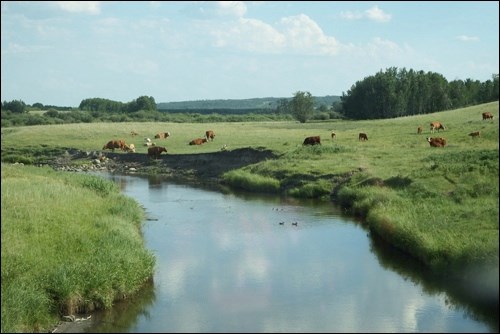Not very far back in history, our slang vocabulary included the expression lead-pipe cinch.” The term meant something very easy to do, a certainty. The allusion was to the ease with which lead pipe could be bent. The more sinister, and unintended, allusion is to the certainty that lead is a poison.
In ancient times, Roman governments not only saw their soldiers perish on distant battlefields, but unintentionally permitted the deaths of non-combatant citizens in highly civilized Roman bathrooms. Although the magnificent Roman aqueducts were made from stone, the water was delivered to the users through lead pipes. Water absorbs lead and so do people who drink lead-contaminated water. The amounts may be small but the effect is cumulative. Lead poisoning causes mild to severe physical and mental deterioration, and the massive absorption of lead is fatal. While the absorption rate from water pipes is normally very low, the rate of absorption from lead compounds and in old metal cookware and old pottery glazes can be very high.
Flint, Michigan, is a city with a huge network of lead water lines. If and when they are replaced, the cost will be astronomical. Flint is not the only example of a community with a municipal water system which is a threat to its citizens.
For many years, experts hanging on their separate hooks in the closets of officialdom have known about the danger of lead in water pipes and common household items such as pans and pottery. Yet, over 2,000 years after the Roman Empire, I saw lead water lines being installed in Saskatchewan. This installation was made during the early years of WWII, when copper was in short supply. Small diameter water lines are now made from copper or plastic, but probably no authority anywhere in Canada knows how many of the old lead lines are still in use or where they are located.
In past years in Saskatchewan, a quantitative analysis of any public water supply was required only when the supply was from a new source. Afterwards quantitative analyses were sporadic and were never free. Local governments were required to obtain water samples to obtain – at no cost to themselves – regular reports as to the level of coliform organisms in their waterworks systems. Coliform organisms come from the bowels of humans and animals. They are not the only dangerous contaminant. Lead may be one and others, such as uranium, may be naturally occurring. Countrywide, there is no foolproof method in use for detecting them. Added to this problem are defects in the operation of municipal waterworks such as antiquated equipment and untrained staff. Another danger which looms is not of quality but of supply. Under NAFTA now, and probably in the future, is the permission which large corporations, both domestic and foreign, have to gain control of aquifers in competition with municipal systems. The corporations sell water commercially in plastic bottles which, unless recycled, are continuing contaminants. We may not be far from the day when massive quantities of Canadian fresh water are exported by pipelines and tankers.
While these huge problems remain unsolved, public attention has been diverted to the debate about genetically modified foods. Certainly patented designer life forms are a menace to the genetic purity of traditional crops. Cross-pollination does take place; heritage strains can be destroyed. So long as GMOs are appetizing and non-poisonous, however, they pose no risk to human health. Certain diets which include GMOs may affect phenotype, which is outward appearance, but not genotype which is individual genetic structure. To think otherwise is to believe lovers of genetically altered pork will grow curly tails and lovers of genetically altered cattle will develop horns and milk-drinking males will grow udders. The whole debate is a sideshow.
The problem of the purity of the water is old and is urgent. The most dangerous problem now is the security of Canada’s fresh water. Canadian water should not be a commodity like softwood or potatoes, to be sold and shipped away to be wasted in another country.




